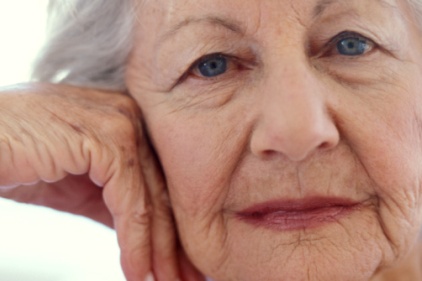 Today's older Americans enjoy longer lives and better physical function than did previous generations, although, for some, an increased burden in housing costs and rising obesity may compromise these gains, according to Older Americans 2012: Key Indicators of Well-Being, a comprehensive federal look at aging by by the Federal Interagency Forum on Aging-Related Statistics.
Today's older Americans enjoy longer lives and better physical function than did previous generations, although, for some, an increased burden in housing costs and rising obesity may compromise these gains, according to Older Americans 2012: Key Indicators of Well-Being, a comprehensive federal look at aging by by the Federal Interagency Forum on Aging-Related Statistics.
In 2010, 40 million people age 65 and over accounted for 13 percent of the U.S. population. In 2030, the number and proportion of older Americans is expected to grow significantly — to 72 million, nearly 20 percent of the population.
The survey covers thirty-seven key indicators categorized into five broad areas — population, economics, health status, health risks and behaviors, and health care. This year's report also includes a special feature on the end of life.
Highlights include:
- Participation of older women in the labor force has increased significantly over the past 40 years. In 1963, 29 percent of women aged 62-64 worked outside the home; in 2011, that had increased to 45 percent. Some older Americans work out of economic necessity. Others may be attracted by the social contact, intellectual challenges or sense of value that work often provides.
- Older Americans are in better economic shape now than they were in 1974. Between 1974 and 2010, the proportion of older people with income below the poverty thresholds (less than $10,458 in 2010 for a person 65 and older) fell from 15 percent to 9 percent. The percentage with low income (between $10,458 and $20,916 in 2010 for people 65 and older) dropped from 35 percent to 26 percent. There were also notable gains in income over the period, as the proportion of people 65 and older with high income ($41,832 and above in 2010) rose from 18 percent to 31 percent.
- The most significant issue by far is housing cost burden, which has been steadily increasing over time. In 1985, about 30 percent of households with householders or spouses age 65 and over spent more than 30 percent of their income on housing and utilities. By 2009, the proportion of older people with high housing cost burden reached 40 percent. For some multigenerational households, crowded housing is also fairly prevalent.
- Obesity, a major cause of preventable disease and premature death, is increasing among older people. In 2009-2010, 38 percent of people age 65 and over were obese, compared with 22 percent in 1988-1994. In 2009-2010, 44 percent of people age 65-74 were obese, as were 29 percent of those age 75 and older.
- Hospice use as increased. The percentage of older people who received hospice care in the last 30 days of life increased from 19 percent in 1999 to 43 percent in 2009. The percentage of older Americans who died in hospitals dropped from 49 percent in 1999 to 32 percent in 2009. The percentage who died at home increased from 15 percent in 1999 to 24 percent in 2009.
The Federal Interagency Forum on Aging-Related Statistics was established in 1986 to improve the quality and utility of federal data on aging.
Older Americans 2012: Key Indicators of Well-Being is available online at www.agingstats.gov.



